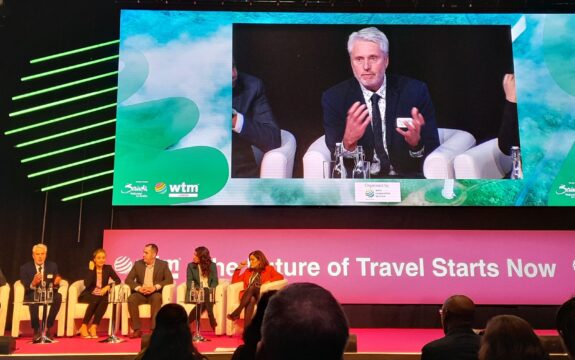Designing Gamification for Responsible Tourism: Giving people a purpose

Responsible tourism is more than minimising your impacts where you travel – it is also about extending the benefits of your trip into the wider community, improving the social, economic, and environmental wellbeing of where you visit. Responsible tourism matters because it helps communities, ecosystems, the tourist, and improves the lives of all involved. Additionally, guests are motivated by and appreciate sustainability efforts which they can experience and enjoy, like sustainable oriented activities or participating in/visiting conservation sites and efforts.
Practicing responsible tourism requires more than just reporting, it needs engagement from your staff and guests, which may seem difficult to do alongside the hectic general operations of hospitality. That’s where gamification comes in. Gamification is a powerful tool which motivates staff and guests to act responsibly, but also makes the experience more fun and leads to increased financial and carbon savings, higher guest, and staff satisfaction, and helps your business make a positive impact beyond its walls.
Gamification is the implementation of elements from games in a non-game environment to increase engagement and influence user behaviour. Some notable examples of services using it are Duolingo (helping you learn a language), loyalty points (to increase frequency and size of purchases), and social media (rewarding you by posting and participating in communities). But it doesn’t have to be about buying more – gamification has also been used to improve health, social wellbeing, environmental awareness, and education, to name a few altruistic purposes.
Some examples of gamified systems for good are:
- Joulebug: helping reduce personal carbon footprint by adding points, badges, and leaderboards to actions such as recycling, choosing meat-free meals, or using sustainable transport options.
- Zamzee: motivating children to be more physically active with points, leaderboard, badges, and customisation.
- The Kukui Cup: helped a Hawaiian college to reduce their energy usage and learn more about sustainability using points, lottery, and leaderboards.
- Beat The Street: a point scoring leaderboard with prizes for distance walked, cycled, ridden, or scooted to UK schools to improve physical health and reduce carbon emissions.
Gamification has also been used within tourism, as seen with the REXplorer and Walk Like an Egyptian, to help people learn more about the area they are visiting. These services focus on stories, puzzles, and the love of learning to entice users.
There is, notably, a gap in gamification for responsible tourism (aside from a few experiments on food waste or linen usage), and this is likely because of a lack of reason for the user to engage. With other gamified systems users often want to engage (want to learn a language, want to shop, want to see their friends) and are assisted by the mechanics. With the above-mentioned gamified systems for good, the ‘good’ cause is obvious, the impact of engaging clear, and benefits many (social interaction, rewards, health). Tourism is, for the most part, missing the mark.
Be it rescuing the prince/ss, fighting a foe, or building the most successful cup-cake shop, games almost always have a larger goal, or purpose. This purpose helps motivate us and is mentioned throughout the journey to remind us why we are doing the current task or mission. Games can be fun and not need a purpose (Tetris doesn’t give the player a specific purpose, aside from user determination to be the best), but a sense of purpose will motivate users when faced with challenges, tedium, or anxiety. What if hospitality tried engaging people by providing a sense of purpose to taking sustainable actions, more so than a smiley face, symbol of the planet asking to re-use a towel, or a discount on breakfast?
My Green Butler has purpose as a central component in our approach to engaging guests and staff at accommodation sites. We provide a focus for their efforts, in our case a Noble Cause, a fundraiser chosen by the property. Fiscal savings from resources and donations get added to this, providing an altruistic goal, which can be counted, and the impact of their efforts shown to them.
The Noble Cause is visible throughout the guests´ stay, and for staff as they go about their daily tasks. It shows them what a difference their actions make and reminds them their efforts do have a real-world impact. Showing the Noble Cause, and being transparent about the purpose, amount raised, and impact of their actions is important – people will become more motivated in playing a part in a cause larger than themselves. Remember, you are recruiting them to solve a problem with you!
If the guests aren’t achieving the resource saving targets set, encouragement and tips are provided. We make sure to use gamification, not shamification.
Something important to remember is to not keep all your eggs in one basket – whilst purpose is an important intrinsic motivator, it is not the only element of gamification you can use. Whilst almost all people will be motivated by a good cause, different people like different things. Other intrinsic motivations include a chance to learn or achieve something, ability to create, winning rewards and points (in moderation!), socialise, or explore. Extrinsic motivators can work in moderation, like leaderboards, badges, or rewards.
Integrating gamification principles in your business to give staff and guests a purpose can greatly increase motivation to participate in responsible tourism, helping hospitality and other businesses to elevate their community engagement, environmental efforts, and carbon and fiscal savings.



